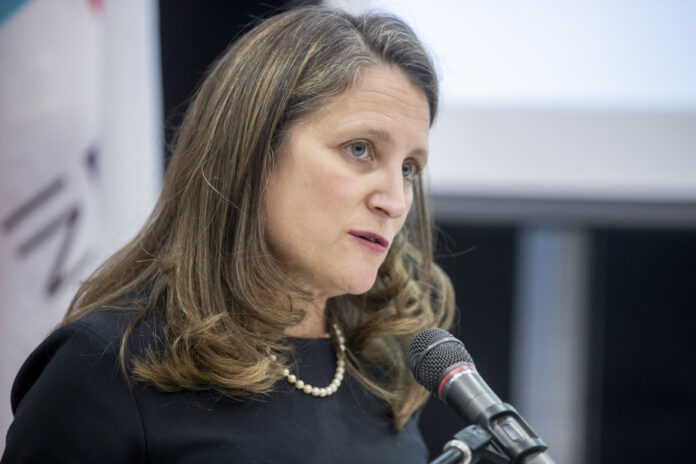(Toronto) The use of a new savings account for first-time home buyers is exceeding expectations, according to Deputy Premier Chrystia Freeland, although she acknowledges the limits of what it can do to solve the problem of affordability.
Speaking after meeting voters in Toronto who want to buy a home, Ms Freeland said the Tax-Free Savings Account for First Time Home Buyers (TFSAP) was just a tool among others to help people enter the market.
“It won’t solve all their problems, I don’t claim that, but it’s a little boost,” she said.
Questrade Inc. has prepared its account for the April 1 launch, while Wealthsimple has also recently started offering the option, including to the approximately 20,000 Canadians who were on their waitlist. Desjardins also announced last week the arrival of the new savings account throughout its network of caisses as well as online on AccèsD.
RBC, which launched its program in April, says its customers have opened “tens of thousands” of accounts since then, with just over a quarter having already reached the maximum annual amount.
The bank says that 56% of account holders are between 25 and 34 years old, 20% between 35 and 44 years old and 6% over 45 years old.
National Bank has also set up its CELIAPP, while the other major Canadian banks announce that theirs will be ready later in the summer or fall.
Critics of the CELIAPP have argued that it will only increase demand – and property prices – while doing little to improve housing affordability.
Ms. Freeland said the young people she spoke to told her of their housing challenges and that much more needs to be done at all levels of government to tackle the issue.
“What they really said was that this is a crisis, and an intergenerational crisis, and I’m fully aware of that,” the Liberal minister said. I really believe that it is important for us, at the federal, provincial and municipal level, to put forward all the tools we have to solve this crisis. »
She added that she and the Prime Minister are focused on building more housing to help solve the problem.
The Canada Mortgage and Housing Corporation projects that the country will need 3.5 million more homes by 2030 than it is currently able to build.
There are, however, a daunting number of obstacles to accelerating the pace of housing construction, from permits to inflation.
With the pace of housing construction not matching population growth, economists at National Bank and TD Bank warned last week that the high number of newcomers to Canada threatens to deepen the affordability crisis. to housing.
Beata Caranci, chief economist at TD Bank, said the current strategy of high immigration growth could worsen the housing shortage by around half a million units within two years, pointing out that the Policy makers need to consider both growth and capacity.
Stéfane Marion, an economist at National Bank, mentioned in a note that the opening of the “immigration floodgates” has created a record imbalance between housing supply and demand, and that the federal government should reconsider its objectives. to allow supply to catch up with demand.
According to Ms. Freeland, while the government is looking to increase supply to solve the crisis, it is also important to continue the expansion of the country.
“I think it’s a very good thing that the Canadian economy is growing and the population of Canada is growing,” she said.















